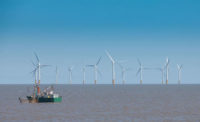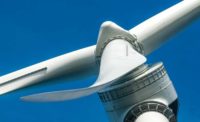While wind energy may still seem like a relatively new technology, it has matured to the point that consultants expect owners will invest about $2 billion a year to partially repower older turbines and make them more efficient. Some 7,500 turbines could be updated in the next three years, boosting average power production for wind farms.
Installing new gear boxes and blades can improve efficiency, capacity, reliability, lifespan, and lower O&M costs for wind farms. Owners can take advantage of the expiring production tax credit to help pay for the projects. With the upgrades, owners can qualify for an additional 10 years of benefits, if they invest 80% of the assets’ value.
Rocky Mountain Power has a $1.1-billion plan to upgrade its fleet of wind turbines that will increase energy production by up to 35%. Wind turbines typically have a lifespan of at least 20 years, but the company will repower turbines installed between 2006 and 2010 by late 2020. “Because they were recently developed, they can be economically repowered while retaining the existing towers, foundations, and energy collection systems,” Timothy Hemstreet, director of renewable energy, told Wyoming regulators. The foundations and towers on older units do not have the height or design strength to accommodate the larger modern equipment, he said.
The repowering market began in 2016, showed steady growth in 2017 and will steadily increase through 2021, says Todd Bell, a repowering and new technology executive for Mortenson’s wind energy group. Mortenson started its repowering business last year and has repowered about 350 turbines.
Repowering older units typically includes replacing the gearbox and adding larger turbine blades, but there are different approaches depending on the age of the project, says Bell. “They get the most current technology in the gear box that was developed from lessons learned since the industry began,” he tells ENR.
Logistically and management-wise, the repowering work is like new construction, says Bell. But it also is similar to service work, he says. Projects use as much of the existing infrastructure as possible, but units have to be analyzed, power agreements might have to be modified and permits have to be obtained.
Crane Intensive
Repowering is more crane-intensive than a new build. Repowering projects typically encompass an entire wind farm, and leases are necessary to move cranes across fields, Bell says.
Mortenson is under strict confidentiality agreements, but MidAmerican Energy confirmed that Mortenson has repowered GE turbines for the Iowa-based utility. Mortenson is a GE subcontractor. The utility does not contract directly with the construction company.
MidAmerican plans to spend more than $1 billion repowering 706 turbines that were installed between 2004 and 2008, out of its fleet of 2,189 units. At this point, 282 have been upgraded, says Geoff Greenwood, a spokesman. The improvements will increase the company’s annual capacity on its GE fleet by 19% to 28%.
The capacity increase is due in large part to the installation of longer blades, Greenwood says. Their diameter will be 32 ft to 40 ft wider. The existing towers range in size from 65 meters to 80 m in height, he says.
The upgraded turbines have more sensor information to monitor wind turbine performance, and the data are used to improve operations.
GE in January finished repowering Leeward Renewable Energy’s 136-MW Sweetwater 1 and 2 wind farms in Texas. The turbines originally were installed in 2003 and 2005.
Siemens Gamesa Renewable Energy repowered two Texas wind farms for NextEra Energy in late 2017. The upgrades are expected to deliver up to 25% more annual energy production, the companies said.
MAKE, a division of Wood McKenzie, last fall began a separate analysis of repowering activity specific to the U.S. “Repowering has accelerated with many turbine [owners] dedicating substantial resources to this effort,” the company said, calling it a “massive undertaking” with enormous market opportunity.
The National Renewable Energy Laboratory says the repowering market has the potential to grow to $25 billion by 2030.
Related Article: How Engineers Help Navigate Renewables and Distributed Generation






Post a comment to this article
Report Abusive Comment